Early-bird Registration Now Open

Our 2024 Award Winners
We are pleased to announce the winners of our 2024 awards, which recognize outstanding contributions to ecology in new discoveries, teaching, sustainability, diversity and lifelong commitment to the profession.
Our 2024 Award Winners
Funding for Long Beach
Volunteer and funding support applications for the 2024 Annual Meeting are still open -- but act fast, as many deadlines loom and volunteer slots fill before you know it!
Funding for Long Beach
Get Certified
Whether you're seeking new opportunities, a career switch or even a way to advance in your current position, certification by ESA can make a difference for you. Easy & affordable application!
Get CertifiedJournals & Publications
-
ESA's Journals & Publications
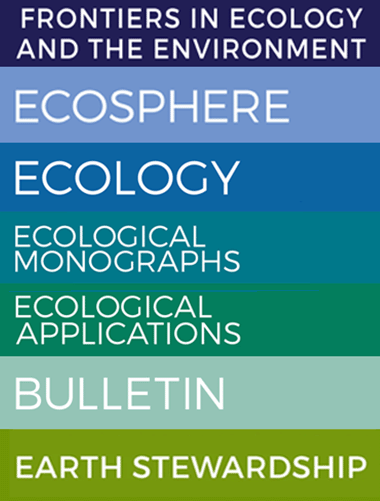
The Ecological Society of America has over 100 years of journal publishing history and offers some of the most widely read and cited journals in the field of ecology. The seven journals in our portfolio encompass a wide array of aims and scope of study, making them an important and accessible outlet for scientists, researchers, practitioners, professionals, citizen scientists, and others seeking to publish their work. The ESA staff provides editorial support with our publishing partner, John Wiley & Sons. Several discounts towards publication in the ESA journals are available from ESA and our publisher. We welcome your submissions.
-
Frontiers in Ecology and the Environment

Horseshoe crabs (Limulus polyphemus) have long been thought to spawn primarily in beach habitats, where the sediment contains environmental conditions conducive for embryonic development. While observations of horseshoe crabs spawning in other habitats were occasionally reported, this behavior was considered rare and non-adaptive. However, spawning and egg surveys conducted in three US states—South Carolina, Connecticut, and New Hampshire—found that horseshoe crabs spawn in salt marshes at similar densities as they do on beaches. Sasson et al. discuss these findings in the June issue of Frontiers. Salt marshes comprise much of the Atlantic Coast of temperate North America; if horseshoe crabs spawn in this habitat at even a fraction of the densities seen in these three states, management plans based on the assumption that they spawn solely on beaches may need to be revisited.
-
Ecosphere
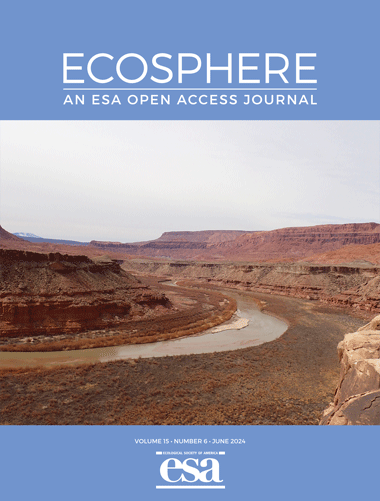
The lower San Juan River in southern Utah, USA, flows towards the confluence with the Colorado River near Navajo Mountain. Since the late 1980s, the river has cut through sediments deposited in the valley bottom when Lake Powell was filling. A waterfall ~6 m tall just upstream of this point has remained in place since 2001, acting as a complete barrier to upstream movement by fishes. Researchers associated with the San Juan River Basin Recovery Implementation Program (SJRIP) translocated four species of native fish annually for six years and used data collected by other SJRIP efforts to evaluate post-translocation movement and survival. In the May issue of Ecosphere, Pennock et al. show that translocated individuals of all four species moved >200 river km upstream within a year and translocated fish survived at higher rates than non-translocated fish.
-
Ecology

Using field surveys and a two-phase plant–soil feedback experiment, Huang et al. assess plant–soil feedbacks between and within forbs and graminoids in their study published in the June issue of Ecology. The cover photo depicts the field site in an alpine meadow on the eastern Tibetan Plateau in China where a 0.25 m2 quadrat may have over 35 plant species in which forbs account for the majority of species, but graminoids dominate in terms of percent cover. Distinguishing between overall and soil biota-mediated plant–soil feedbacks revealed that associations between plant traits and plant–soil feedbacks were mediated by soil biota, highlighting its role in the coexistence of these major functional plant groups.
-
Ecological Monographs
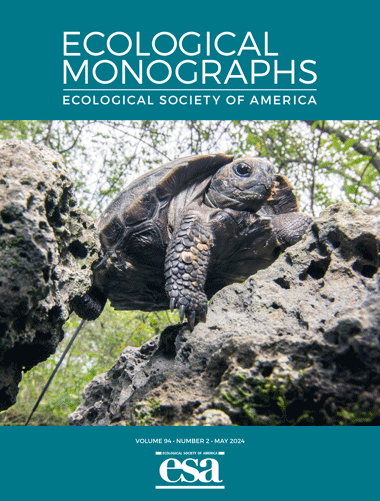
The photo on the cover of the May issue of Ecological Monographs illustrates the challenges faced by hatchling Galapagos tortoises as they disperse—often immense distances—from their nests in the aftermath of hatching. This Galapagos tortoise (Chelonoidis porteri) hatchling, named “Samuel” by Blake et al. and from their study published in the May issue, was radio-tagged in February 2013 when he weighed just 75 grams. Now 8 kilograms, Samuel is one of the few survivors from over 100 hatchlings followed over nine years to determine egg and hatchling survival and growth and female fecundity along elevation gradients on the Galapagos. While nine years provides a long period of ecological research, it may be less than 5% of Samuel's lifespan.
-
Ecological Applications
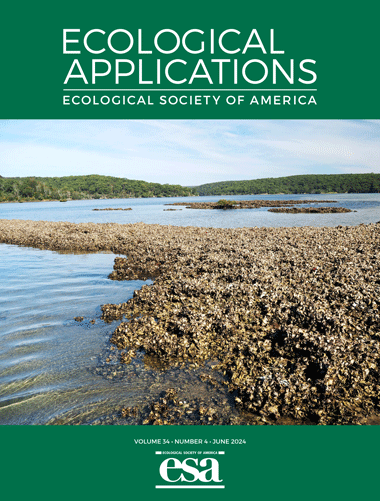
One of few remaining oyster reefs in Australia, comprising of Sydney rock oysters (Saccostrea glomerata), emerges at low tide near Port Hacking in Sydney, Australia. These reefs are important for the local ecosystem, providing habitat and food, but are almost extinct—approximately only 10% of these reefs remain. In their study in the June issue of Ecological Applications, Leong et al. studied recruitment and energy reserves of oyster spat on these threatened reefs to inform successful long-term restoration strategies. They found that oyster recruitment varied mostly at the scale of estuaries rather than with reef attributes and was negatively correlated with sedimentation, indicating low sedimentation estuaries should be targeted for restoration.
-
The Bulletin
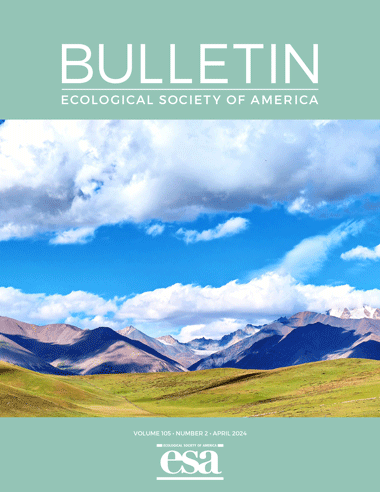
In the April issue of the ESA Bulletin, ESA President-Elect Stephanie E. Hampton and recent Past-Presidents Kathleen C. Weathers and Dennis S. Ojima summarize ESA's publishing portfolio and the benefits of publishing in ESA journals. Our journals are widely available and offer many discounts to authors thanks to our publishing partnerships, and publication in ESA journals provides ESA with opportunities to enrich our programs that support students, early career researchers, and underrepresented groups, and more.
-
Earth Stewardship
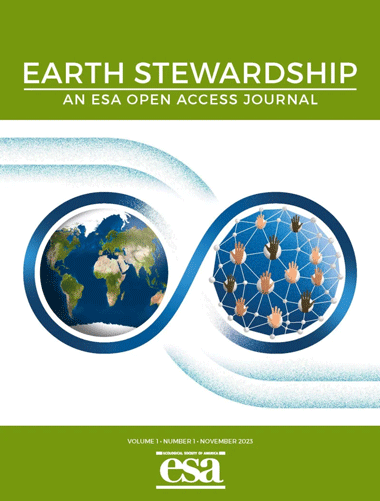
We are delighted to announce a call for submissions for the inaugural issue of Earth Stewardship. This exciting new Open Access journal, launched with our publishing partner, John Wiley & Sons, calls for a broad spectrum of scientifically and technologically innovative and groundbreaking contributions including cross-cultural perspectives from leading researchers, policymakers, traditional custodians of land and sea and indigenous communities. Earth Stewardship publishes applied and theoretical articles to promote a broad, intercultural, and participatory foundation for earth stewardship.

Equity and Excellence in Ecology
Contributions to the Equity and Excellence in Ecology endowment lowers critical barriers to success and facilitates the full participation of scientists historically underrepresented in ecology.
The EEE Scholarship comes with an award of $5,000 and support for research, travel to ESA annual meeting, family care, open-acesss publication

Opportunity Fund Donations
Make a difference and fund programs which empower, educate and embolden both the current and next generation of scientists in the vast field of ecology.
Opportunity Fund Donations
This Year's Meeting
The 2024 Annual Meeting will be held in Long Beach California. Select the following link and check out the theme, preliminary schedule, exhibitor opportunities and upcoming deadlines for proposals.
This Year's Meeting